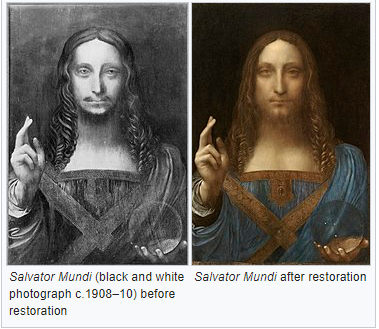
Even if you weren't sure what it was called, you've almost certainly seen this image before, whether the original or a parody.
— The Cultural Tutor (@culturaltutor) October 21, 2022
In film, online, on t-shirts, on album covers, on coins: it's everywhere.
But who was the Vitruvian Man? Well… pic.twitter.com/mRVzPMRGZn
Vitruvius was a Roman military engineer and architect who lived in the 1st century B.C. and, we think, worked with Julius Caesar.
— The Cultural Tutor (@culturaltutor) October 21, 2022
In his later life, perhaps around 30 B.C., he wrote a short treatise called De Architectura, the *only* surviving architectural work from Antiquity. pic.twitter.com/h6xSdNb63t
Proportion was *fundamental* to classical architecture.
— The Cultural Tutor (@culturaltutor) October 21, 2022
As Vitruvius wrote, every single element of a building must have a strict proportional relationship to the other, thus creating an overall appearance of harmony, elegance, and strength. pic.twitter.com/wY6Xcqhhtm
And so his argument was that architectural proportions should themselves take from the naturally harmonious proportional relationships of the human body.
— The Cultural Tutor (@culturaltutor) October 21, 2022
That was, he theorised, the key to building a perfect structure and therefore the foundation of classical architecture. pic.twitter.com/OWmczE3QnI
Vitruvius' De Architectura was the key to finally, properly understanding them. It was almost like the Rosetta Stone of architecture.
— The Cultural Tutor (@culturaltutor) October 21, 2022
First Brunelleschi, then Bramante, took up this new architectural language and brought it back to life: pic.twitter.com/hsiqhpWoOV
The Renaissance had well and truly begun.
— The Cultural Tutor (@culturaltutor) October 21, 2022
Architects were now designing building based on the principles of classical design, as explained by Vitruvius, with all its rules of proportion and other structural and aesthetic traits. pic.twitter.com/5RiNdDK2Es
Leonardo's Vitruvian Man, whose name you now recognise, was a notebook sketch made in around 1490 based on the human proportions described by Vitruvius in De Architectura.
— The Cultural Tutor (@culturaltutor) October 21, 2022
Vitruvius' proportions were the basis and inspiration for Renaissance architecture, which revived the classical style, and therefore also of Neoclassical architecture, which has dominated and spread across the world ever since.
— The Cultural Tutor (@culturaltutor) October 21, 2022
Not just in obvious examples like these: pic.twitter.com/Cbg39xreGx
So there's a good chance you're in or near a building right now which has some classical element or influence, an architectural language given to us, at first, by Vitruvius.
— The Cultural Tutor (@culturaltutor) October 21, 2022
And Leonardo's drawing perhaps contains the very proportions of that building.
And that is, in so many words, the Vitruvian Man. pic.twitter.com/PTqnDbXsXm
— The Cultural Tutor (@culturaltutor) October 21, 2022
